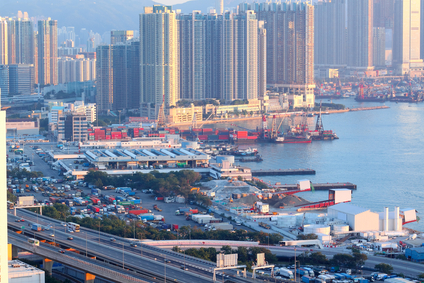Creating Marine Port Clusters in Canada
 Creating Marine Port Clusters in Canada
Creating Marine Port Clusters in Canada
The potential for marine ports to expand is an issue that many major facilities around the globe are contending with. This is actually good news because the demand for expansion means that shipping numbers are up across the board.
Q: How can a terminal that is “locked down” expand?
A: By setting up marine port clusters in the area.
Port clusters are a group of complementary companies that set up business in a region to service common clientele. University research has shown that regional clusters of interlinked industries, organizations, and institutions act as a fertile ground for innovation, entrepreneurship, and the upgrade of competitive advantage among firms.
A perfect example of this type of development can be found at the Port of Savannah in Georgia. Because of the increasing demand, additional marine ports were built as a kind of satellite terminal. These operations are owned by CSX and Norfolk Southern. Combined, they were able to move 314,623 containers last year. That certainly takes some of the burden off of the Port of Savannah and keeps operations moving.
In addition to the marine ports, there have been several logistic zones set up around the main port. These include the Crossroads Business Park and the Savannah River International Trade Park. These facilities allow major players like Target and IKEA to set up distribution centers (DC) that can take advantage of the expanded Port Authority terminals.
Across the Atlantic, the Port of Rotterdam has set up its own cluster zones. It is through these ports that the goods of Europe flow. The vitality of the European Union depends on this commerce.
For its part, Rotterdam set up a specific organization, Deltalinqs, charged with coordinating all the work of the cluster operations. Deltalinqs represents over 600 companies in the surrounding area. That is just a fraction of the 3,550 companies that use the Port of Rotterdam for some type of cargo handling.
Thanks to the development of these marine port clusters, the Port of Rotterdam is also able to accommodate other types of businesses beyond the shipping industry. The result has been that energy and chemical companies now make up 50% of the total revenue generated at the port.
Marine Port Congestion
Even with the clusters in place, congestion is still a major issue for any company doing business through Rotterdam. This has driven the logistics company, Waalhaven Group, to move its operations 200 km beyond Rotterdam. The affordable land prices and access to infrastructure is drawing other customers to Waalhaven.
Next to Rotterdam, Antwerp is the largest marine port in Europe. Here too, the available land can’t meet the demand for expansion. To accommodate the expansion, Alfaport Antwerp is partnering up with Flemish officials to create an environment that will be friendly to incoming businesses as the plans for port clusters are being developed.
The coalition, put together by Alfaport, consists of 400 members from various industry groups. Among the associations involved in the development are the Antwerp Stevedores Association, the Antwerp Shipping Federation, the Royal Belgian Association of Shipowners, the Royal Association of Trafficflow Controllers and the Association for Forwarding, Logistics and Freight Interests in Antwerp.
Here in Canada, marine port operations can learn a lot from these port cluster expansions. As a port executive, it would make sense to initiate these conversations with the government and key partners as shipping traffic increases. By involving the government and shipping associations at the early stages, port officials can get everyone on the same page and keep them there.

